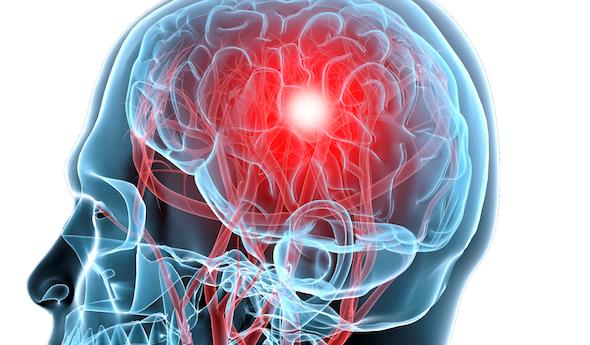
Flynn, Guzzo & Thayer Named 2021 Bush Award Recipients
By
Geoff Kimmerly
MHSAA.com senior editor
November 18, 2021
Birmingham Groves’ Thomas Flynn, St. Joseph’s Kevin Guzzo and Bay City Western’s Michael Thayer are leaders of Michigan high school athletic programs who have put education and providing a positive student experience at the forefront of their work, while also becoming known among colleagues for their guidance and assistance to others striving to build the same foundations at their schools.
To recognize not only their work within their districts but their impacts on many other leaders in athletic administration, Flynn, Guzzo and Thayer have been named recipients of the Michigan High School Athletic Association’s Allen W. Bush Award for 2021.
Al Bush served as executive director of the MHSAA for 10 years. The award honors individuals for past and continuing service to school athletics as a coach, administrator, official, trainer, doctor or member of the media. The award was developed to bring recognition to people who are giving and serving without a lot of attention. This is the 30th year of the award, with selections made by the MHSAA's Representative Council.
 Flynn has begun his 21st year as Birmingham Groves High School athletic director and 32nd overall at the school after beginning as a teacher. He has served as a host of MHSAA Tournament events in team and individual wrestling, girls and boys diving, girls and boys tennis, girls and boys basketball, baseball and softball, football, ice hockey, volleyball and girls and boys soccer. Flynn also has served on MHSAA Committees for wrestling, gymnastics, swimming & diving, tennis and various officials topics. He made Groves the home of all Metro Detroit Officials Association meetings and has received recognition for his service to the Oakland County Wrestling Officials Association.
Flynn has begun his 21st year as Birmingham Groves High School athletic director and 32nd overall at the school after beginning as a teacher. He has served as a host of MHSAA Tournament events in team and individual wrestling, girls and boys diving, girls and boys tennis, girls and boys basketball, baseball and softball, football, ice hockey, volleyball and girls and boys soccer. Flynn also has served on MHSAA Committees for wrestling, gymnastics, swimming & diving, tennis and various officials topics. He made Groves the home of all Metro Detroit Officials Association meetings and has received recognition for his service to the Oakland County Wrestling Officials Association.
Flynn has served as president, vice president, secretary and treasurer for the Oakland County Athletic Directors Association, and as the Region 11 representative for the Michigan Interscholastic Athletic Administrators Association (MIAAA). A certified athletic trainer, he also is a longtime member of the National Athletic Trainers Association. The MIAAA named Flynn a Regional Athletic Director of the Year in 2012.
He graduated from Hillsdale High School in 1984, then earned a bachelor’s degree in biology with an emphasis on sports medicine from Grand Valley State University in 1990. He received a master’s in sports administration from Wayne State University. Flynn also has served on the Birmingham Bloomfield Community Coalition.
“Tom is a guy who is willing to do anything to assist the MHSAA. He’s hosted an Individual Wrestling District for 20-plus years, and that’s far-and-away the most difficult event to host – and he wants to do it every year,” MHSAA Executive Director Mark Uyl said. “Tom is not afraid to do the dirty work, but he’s also not afraid to speak up, and that’s something I’ve always admired and appreciated about him.”
 Guzzo has begun his 26th year with St. Joseph Public Schools and 18th as athletic director after previously serving as a coach and teacher. He earned his elite certification in the MHSAA Coaches Advancement Program in 2014 and has served as a CAP instructor and as an instructor for the National Interscholastic Athletic Administrators Association (NIAAA) Leadership Training Institute. He also has served as chairperson representing the MIAAA on the Five State Exchange Committee. A frequent contributor as well to MHSAA Committees for sports, officials, classification and site selection, Guzzo recently contributed as part of the MHSAA Multi-Sport Task Force.
Guzzo has begun his 26th year with St. Joseph Public Schools and 18th as athletic director after previously serving as a coach and teacher. He earned his elite certification in the MHSAA Coaches Advancement Program in 2014 and has served as a CAP instructor and as an instructor for the National Interscholastic Athletic Administrators Association (NIAAA) Leadership Training Institute. He also has served as chairperson representing the MIAAA on the Five State Exchange Committee. A frequent contributor as well to MHSAA Committees for sports, officials, classification and site selection, Guzzo recently contributed as part of the MHSAA Multi-Sport Task Force.
He received his certified athletic administrator (CAA) designation from the NIAAA in 2007 and was named an MIAAA Regional Athletic Director of the Year in 2015.
Guzzo graduated from Bessemer High School in 1991, then earned his bachelor’s degree in secondary mathematics at Western Michigan University in 1995 and master’s in math education from WMU in 2001. He has been active in the St. Joseph Lions Club, First Tee of Benton Harbor and the local Senior PGA Tournament Committee.
“Kevin has become a real leader in the southwestern corner of the state, and in many rooms has grown into a veteran voice of reason on many topics and issues,” Uyl said. “He’s taken what he’s learned over the years and incorporated it into his teaching as a Coaches Advancement Program instructor, and we are thrilled that we have many beginning coaches who one of their first mentors is a person like Kevin through CAP.”
 Thayer has begun his 25th year as an athletic director and also serves as an assistant principal at Western. He served at Merrill Community Schools from 1995-2007 before arriving at Western with the start of the 2007-08 school year. He also is a frequent MHSAA Tournament host and has been a valued voice on a variety of MHSAA Committees, including the Multi-Sport Task Force and selection committee for the MHSAA-Farm Bureau Insurance Scholar-Athlete Awards. Additionally, he has served as the MIAAA’s historical records chairperson and as part of its public relations committee.
Thayer has begun his 25th year as an athletic director and also serves as an assistant principal at Western. He served at Merrill Community Schools from 1995-2007 before arriving at Western with the start of the 2007-08 school year. He also is a frequent MHSAA Tournament host and has been a valued voice on a variety of MHSAA Committees, including the Multi-Sport Task Force and selection committee for the MHSAA-Farm Bureau Insurance Scholar-Athlete Awards. Additionally, he has served as the MIAAA’s historical records chairperson and as part of its public relations committee.
He is active with the NIAAA and Michigan Association of Secondary School Principals (MASSP) and National Association of Secondary School Principals (NASSP). He was selected for a Regional Athletic Director of the Year Award by the MIAAA in 2017, and also that year received the MIAAA’s George Lovich State Award of Merit.
Thayer graduated from Muskegon Orchard View High School in 1986, then earned his bachelor’s degree in business teaching from Central Michigan University in 1990 and master’s in educational administration/school principalship from CMU in 2003. He also is a CAP elite-certification graduate. He has served as a trustee for Thomas Township – with membership in the Michigan Township Association – and been active in the Shields Lions Club.
“Mike has been one of the true leaders of the Saginaw Valley League for a long time, and he’s really become the point guard of that league over the last five years,” Uyl said. “If ever someone should be defined for quiet, steady leadership, it’s Mike Thayer. It’s always about substance with Mike. He’s as reliable an athletic director as there is in the country.”

MHSAA Announces 2016-17 Concussion Data
August 7, 2017
By Geoff Kimmerly
Second Half editor
The Michigan High School Athletic Association has completed its second year of collecting head injury reports from member schools as it continues to build data that will assist in identifying trends and progress being made to reduce the incidence of head injuries in school sports.
Following a first mandate to do so in 2015-16, member schools again were required to report head injuries to the MHSAA identifying the sport that each student-athlete was participating in and whether the injury was sustained during practice or competition. As reporting for the 2017-18 school year is now underway, schools again are required to designate if potential concussions occur during competition or practice and at which level – varsity, junior varsity or freshman.
The full report of all head injuries experienced during 2016-17 by student-athletes at MHSAA member high schools – including percentages by sport (per 1,000 participants), gender and team level, as well as data tracking when athletes returned to play – is available on the Health & Safety page of the MHSAA Website.
As with the first year of reporting, the MHSAA received data from more than 99 percent of its member high schools after the fall, winter and spring seasons and continued to track each injury report through its conclusion this summer. Member junior high and middle schools also were allowed, although not mandated, to report their potential head injuries; and those findings are not part of the published report.
The 2016-17 concussion report found an 11-percent decrease in the number of confirmed concussions from the previous year. Student-athletes at MHSAA member high schools encountered during 2016-17 a total of 3,958 head injuries – or 5.2 per member school, similar but lower than the 2015-16 average of 5.9. Total participation in MHSAA sports for 2016-17 was 283,625 – with students counted once for each sport he or she played – and only 1.4 percent of participants experienced a head injury; that percentage in 2015-16 was 1.6.
However, MHSAA Executive Director John E. “Jack” Roberts said that while it’s significant to note the similarity in those statistics over the first two years of injury report collection, the lower percentages in 2016-17 don’t necessarily represent a trend – that conclusion can only be made after more data is collected in years to come. Some differences in data from the first year to the second could be the result of schools’ increased familiarity with the reporting system, the refinement of the follow-up reporting procedure and other survey error that is expected to decrease with future surveys.
“Our first survey in 2015-16 raised some initial themes, and the data we collected this past year and will continue to collect will help us identify the trends that will guide our next steps in reducing head injuries in interscholastic athletics,” Roberts said. “However, the necessity for more data to determine these trends should not delay our efforts to experiment with more head protection and modified play and practice rules in contact sports like ice hockey, soccer, wrestling and lacrosse – which all ranked among the top 10 sports for numbers of head injuries per thousand participants.
“We will continue to look for ways to make our good games better and our healthy games safer, and the collection of this data will continue to prove key as we work toward those goals.”
Although the total number of confirmed concussions was significantly lower in 2016-17, a number of findings detailing those injuries fell in line with results of the 2015-16 survey.
Boys experienced 2,607 – or 66 percent – of those injuries, nearly the same ratio as 2015-16 and as boys participation in sports, especially contact sports, remained higher than girls. More than half of head injuries – 55 percent – were experienced by varsity athletes, which also fell within a percent difference of last year’s findings.
A total of 2,973 head injuries – or 65 percent – came in competition as opposed to practice. More than half took place during either the middle of practice or middle of competition as opposed to the start or end, and 52 percent of injuries were a result of person-to-person contact. The largest percentage of athletes – 27 percent – returned to activity after 6 to 10 days, while 23 percent of those who suffered head injuries returned after 11-15 days of rest. All of these findings were within 1-4 percent of those discovered from the 2015-16 data.
Contact sports again revealed the most head injuries. Ranking first was football, 11 and 8-player combined, with 44 head injuries per 1,000 participants – a decrease of five head injuries per 1,000 participants from 2015-16. Ice hockey repeated with the second-most injuries per 1,000, with 36 (down two injuries per 1,000 from 2015-16), and girls soccer was again third with 28 head injuries per 1,000 participants (also down two from the previous year).
In fact, after football and hockey, four of the next five sports to show the highest incidences of head injuries were girls sports – girls soccer followed by girls basketball (23 per 1,000), girls competitive cheer (22) and girls lacrosse (20). Although girls basketball again showed the fifth-highest ratio, it did see a decline of six injuries per 1,000 participants from 2015-16.
Startling indications of another potential trend were seen again in the number of reported head injuries suffered by girls and boys playing the same sports. Soccer, basketball and baseball/softball are played under identical or nearly identical rules. Just as in 2015-16, females in those sports reported significantly more concussions than males playing the same or similar sport.
Female soccer players reported double the concussions per 1,000 participants as male soccer players, while female basketball players reported nearly triple the number of concussions per 1,000 participants (23 to 8). Softball players reported 11 concussions per 1,000 participants, and baseball players reported four per 1,000. The numbers from all three comparisons remained consistent from what the survey found in 2015-16.
It is the hope that Michigan’s universities, health care systems and the National Federation of State High School Associations will take part in analyzing the data and questions that have arisen during the past two years. Michigan State University’s Institute for the Study of Youth Sports submitted a paper titled “Gender Differences in Youth Sports Concussion” based on the 2015-16 results, and that subject will remain closely monitored in 2017-18 and beyond.
“The Institute’s research concluded that there is merit for believing females may be more susceptible than males to having concussions because of structural differences to the neck and head, and also due to neurological differences in the brains of females and males. But the findings also show merit for believing females may be more honest in reporting concussions,” Roberts said.
“We need to find out why. Are girls just more willing to report the injury? Are boys hiding it? These are some of our most important questions moving forward, and they will be critical in our efforts to educate athletes, their parents and coaches on the importance of reporting and receiving care for these injuries immediately.”
Schools report possible concussions online via the MHSAA Website. Reports are then examined by members of the MHSAA staff, who follow up with school administrators as those student-athletes continue to receive care and eventually return to play. Student privacy is protected.
The reporting of possible concussions is part of a three-pronged advance by the MHSAA in concussion care begun during the 2015-16 school year. The MHSAA completed this past spring (2017) the largest-ever state high school association sideline concussion testing pilot program, with a sample of schools from across the state over the last two years using one of two screening tests designed to detect concussions. The second year of the pilot program (2016-17) allowed participating schools to use the sideline detection tests in all sports but mandated they be used in sports (11 total over three seasons) showing the highest prevalence of concussions.
The MHSAA also was the first state association to provide all participants at every member high school and junior high/middle school with insurance intended to pay accident medical expense benefits – covering deductibles and co-pays left unpaid by other policies – resulting from head injuries sustained during school practices or competitions and at no cost to either schools or families. During 2016-17, a total of 139 claims were made – 20 fewer than in 2015-16 – with football (44) and girls basketball (27) the sports most cited in those claims for the second straight year.
Previously, the MHSAA also was among the first state associations to adopt a return-to-play protocol that keeps an athlete out of activity until at least the next day after a suspected concussion, and allows that athlete to return to play only after he or she has been cleared unconditionally for activity by a doctor (M.D. or D.O.), physician’s assistant or nurse practitioner.
In addition, the MHSAA’s Coaches Advancement Program – which includes courses that must be completed by all varsity head coaches hired for the first time at a member school – has augmented for this fall its already substantial instruction on concussion care. Separately, rules meetings that are required viewing for all varsity and subvarsity head and assistant coaches at the start of each season include detailed training on caring for athletes with possible head injuries.
The MHSAA is a private, not-for-profit corporation of voluntary membership by more than 1,400 public and private senior high schools and junior high/middle schools which exists to develop common rules for athletic eligibility and competition. No government funds or tax dollars support the MHSAA, which was the first such association nationally to not accept membership dues or tournament entry fees from schools. Member schools which enforce these rules are permitted to participate in MHSAA tournaments, which attract more than 1.4 million spectators each year.

